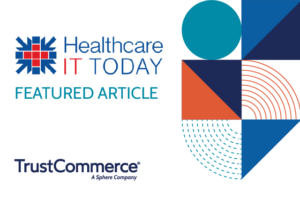It’s that time of year again! For many in the U.S., there is a hint of a chill in the air. The holidays are fast-approaching, and it’s almost time to trade out 2022 calendars for shiny, new 2023 versions. As we break out our prize-winning turkey and stuffing recipes, we begin to reflect on the past year: what we have learned, how far we have come, and what might be on the horizon.
Digital Front Door:
Providing patients a consumer-like experience is here to stay. Digital front door strategies all have in common the objective of delivering “an integrated approach that offers patients a meaningful and connected experience at every step along their journey,” according to the Medical Group Management Association.
The Good News About Digital Front Door:
Adopting digital solutions to drive convenience for patients and staff alike, isn’t as hard as it may seem. Health iPASS patient engagement platform offers a single solution that covers scheduling, appointment reminders, intake, estimates, card on file, etc. In addition, TrustCommerce platform integrations with leading EHRs such as Epic, Veradigm (Allscripts), athenahealth, and many others enables patients to perform tasks such as appointment scheduling, refill requests and paying a co-pay for services post-visit simply by logging in to a patient portal that is tied to the EHR.
Staffing Issues:
According to the U.S. Bureau of Labor Statistics, the rate of employees quitting their jobs is at the highest it has been since the organization began its yearly turnover survey in 2000. The healthcare industry has been particularly hard-hit in the last year due to issues like staff burnout, vaccination requirements, and an inability of nursing education programs to meet the current demand. The nursing shortage is reaching dire levels. A recent study found that 275,000 additional nurses are needed from 2020 to 2030.
The Good News About Staffing Issues:
As in any crisis, discomfort drives innovation. Options like telehealth are increasing healthcare accessibility, and some states are making licensure requirement changes to mitigate long wait times due to bureaucratic stagnation.
Looking for ways to overcome this unprecedented combination of simultaneous financial and operational challenges? Check out our TrustCommerce ebook to learn how providers are adopting digital payment and patient engagement tools.
Healthcare Price Transparency:
It’s been a banner year for healthcare cost control legislation. It all began in January with The No Surprises Act, which was designed to reduce surprise bills incurred from visits to emergency departments at hospitals or clinics. On July 1, 2022, the Transparency in Coverage Final Rule (part of the Affordable Care Act) went into effect, which is intended to allow patients to make more informed financial choices in regard to their healthcare. This rule requires employer-sponsored group health plans and health insurance issuers to provide negotiated rates for all covered items and services, historical payments to and billed charges from out-of-network providers, and more. The legislation was enacted with the hope to “lift the veil” on healthcare pricing and ostensibly encourage price competition between providers and insurers for more affordable healthcare in the future.
The Good News About Healthcare Price Transparency:
There are many low-cost options that healthcare providers can use to get ahead of any cost transparency rules that may be coming in the future. For example, Health iPASS allows providers to communicate costs clearly and effectively, and even offers multiple payment options, including enabling patients to make smart deposits toward future surgeries or treatments.
While many insurers and provides feel like rushing to comply with healthcare price transparency legislation is a struggle, ultimately these efforts will likely lead to a more consumer-focused healthcare system in the U.S., which is a benefit to all Americans going forward.
Read more about the No Surprises Act here.






